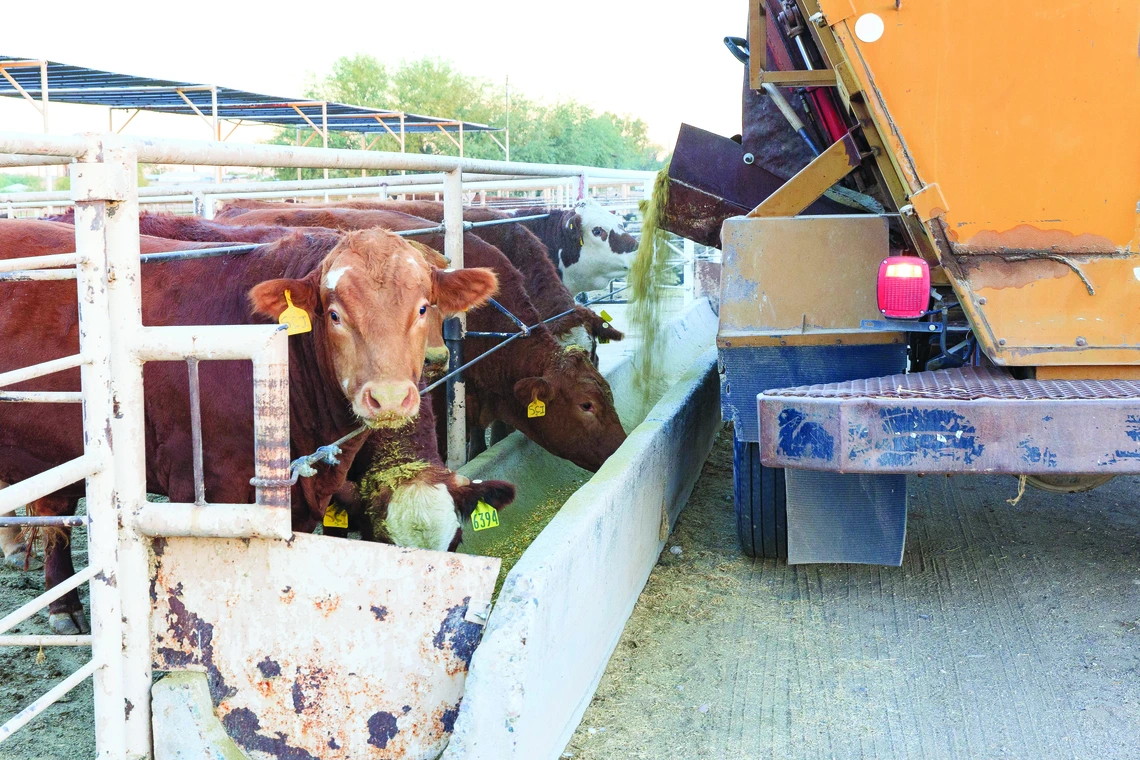UArizona feedlot provides valuable cattle handling and feedlot experience

The facility, under the direction of Duarte Diaz, is currently located at the West Campus Agriculture Center off of I-10 between Prince Rd. and Miracle Mile in Tucson. The facility includes a full working feedlot, pastures for the 38 head breeding herd, and a feed mill. In addition to the breeding herd, the feedlot maintains an inventory of 75 head of cattle throughout the year to provide teaching opportunities, support research projects, and fulfill the needs of the UArizona Food Product and Safety Lab (FPSL). Amber Hubbell, feedlot manager explains, “We are able to be the center of the life cycle of cattle. We have the mama cows that are bred here, then we birth their babies. We wean the calves at 4-6 months of age and start backgrounding them. The calves finish out at a weight of 1,200 pounds and are then harvested at the FPSL. The beef is then used to help students gain experience in the meat side of the industry, and in the end provide food to consumers and other by products.”
The cattle in the feedlot are typically a mix of calves bred at the feedlot and from the UArizona V-V Ranch located in Camp Verde, Arizona. The calves coming to the feedlot from the Tucson facility provide opportunities for students to gain hands-on experience with “backgrounding” or taking fresh weaned calves and starting them on feed. This stage has shown to be very important for cattle to be successful in the feedlot. It involves introducing calves to eating out of a bunk, starting them on a grain diet, and acclimating them to the pens and facilities. Students help monitor cattle growth by weighing the cattle individually each month. These animals provide the hands-on component to what is being taught in the classroom including use of flight zone, acclimation, nutrition, growth, health monitoring and veterinary care. Additionally, once harvested, they are used in carcass evaluation and meat course teachings prior to the meat being sold in the Wildcat Market.
Students are introduced to the feedlot through ACBS 102L, an introductory laboratory course that rotates them through various production practices and procedures in the animal industry. Students learn about cow-calf operations and feedlot management and gain hands-on experience in the use of flight zones and proper movement of cattle, chute handling skills, mixing rations, managing feed bunks and acclimation.
For students who are interested in gaining a full understanding of cattle management and feedlots, there are two student worker positions at the facility, as well as the option for internships and independent studies.

